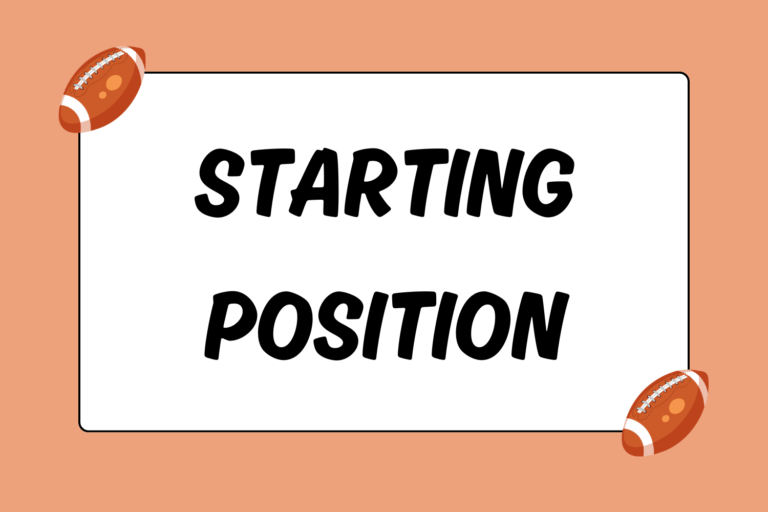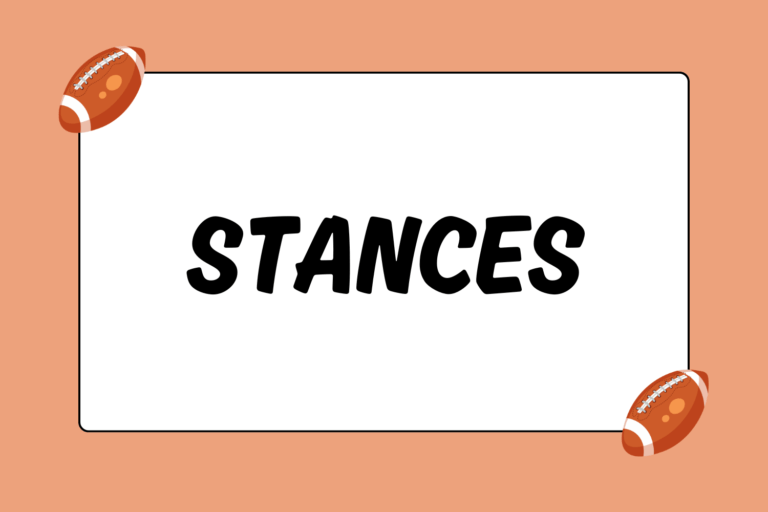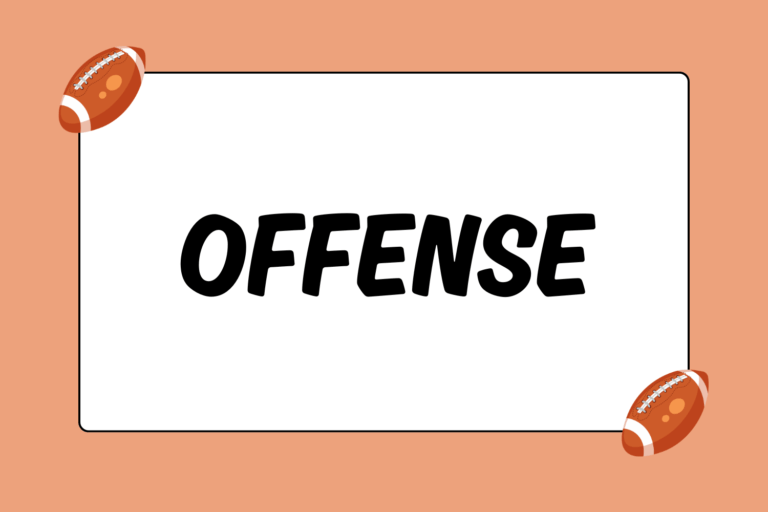The offensive half of the game of football is really built around two core skills: Moving the ball, and blocking opposing players so the ball can be moved. While it’s true the ball-moving component usually gets much more attention than blocking, good blocking is absolutely essential to a team’s ability to successfully pass or run the ball. Imagine an offense without an offensive line; more to the point, think how easy that would make it for the defense to quickly disrupt the play. That’s an unrealistic example, sure, but it works to show how vital blocking is to the offensive game.
Though the essence of a block is pushing against an opposing player, there’s much more that goes into it — proper technique, timing, and body positioning are just a few of the important components involved when preparing for and executing a block. This guide features an examination of all those various elements, introduces the two different types of blocks — the run block and the pass block—and explains the differences between them.
The Run Block
The vast majority of run blocking is done by the O-Line, since that is where the run play actually originates. The main objective of run blocking is to aggressively maneuver, manipulate, push, force, etc. defensive players in such a way that it creates a clear path for the running back to carry the ball through. The receivers (if there are any) may occasionally block the D-back that’s covering them, but will usually just run a pass route to lure the D-back away from the actual play.
Technique
There’s more to run blocking than just trying to push an opposing player in a certain direction. Like any other football ability, successful blocking depends on the execution of a precise technique. Here’s a breakdown of a typical run block:
Step 1: Make a Good First Move
From the starting stance, fire out at the defensive player that you are attempting to block. Keep the elbows tucked in and bent slightly, hands pointed out, feet slightly wider that shoulder-width apart.
Step 2: Set Up the Block
When you get close enough, make contact with a good shove on the defensive player.
- Drop your hips a few inches to maintain a low center of gravity, which gives you a positioning advantage over the defender.
- Forcefully straighten your arms into the middle of the defender’s chest, keeping the hands close together to concentrate the momentum of the shove into one area and maximize the force of impact.
The first hit is important in establishing the block; the better the hit, the easier it is to maintain the block.
Step 3: Establish and Maintain Control
Maneuver the defensive player by maintaining contact with the front of that player (otherwise it’s a foul).
- Follow through and control the shove by driving through the player using a continuous series of mini-shoves, similar to the first big one but without completely lowering the arms back to the sides.
- Continue pumping your legs — the moment your feet stop, you lose all your momentum.
Continuous movement is key to maintaining control of the block. As soon as movement ends, all the energy of the block disappears.
Though different players will eventually develop their own personal technique, the maneuvers listed above provide a good example of the typical run block technique.
The Result
If done properly, the run block should push the defensive player well out of the way of the running back. When it’s executed perfectly, the defensive player is blocked so hard and so quickly that they are knocked to the ground—what is called a ‘Pancake Block.’ When done correctly by multiple linemen, an alley should be created for the running back to safely run through.
Of course, defensive players don’t usually sit idly and wait to be pushed around, so it’s much easier to describe a run block than it is to actually do one.
Mental Edge
There’s really no such thing as defensive blocking. Put simply: the main objective on defense is to disrupt the offense’s play as quickly as possible, so the less people the defense has in their way, the easier that job will be.
The exception to the ‘no defensive blocking’ rule is when D-backs sometimes jostle receivers right as the play starts, but that too is more of an attempt to prevent the offense’s play from working correctly.
The Pass Block
While the aim of run blocking is to attack, the purpose of pass blocking is to defend. The main objective is to keep incoming defenders from disrupting the quarterback and preventing a pass from being cleanly thrown. Defenders will try to tackle the quarterback, get close enough to make him/her throw the ball early or poorly, or swat the ball down after it’s been thrown — good pass blocking should prevent all of these attempts by the defense to interrupt the play.
Technique
All pass blocking is done by the O-line and occasionally by the running back(s), depending on the formation. But unlike run blocking, a successful pass block actually requires the ability to play a bit of ‘keep-away,’ namely keeping the defense away from the quarterback.
Step 1: Secure Your Base
From the starting stance, take a slight step backward and drop the hips, so you’re lower than the oncoming defensive player you’ve targeted to block. Keep the elbows in, with the hands up and ready to make contact. This sets you up in a position to absorb and control the force of the defensive player, and allows you to redirect the other player in a direction of your choosing.
Step 2: Keep the Other Guy Off Balance
Immediately before the defensive player makes contact, quickly extend the arms into the defensive player’s chest, finishing the move with an upward push that should both limit the defender’s momentum and knock them off balance. Remember, momentum is control, so by taking the defender’s momentum away you reduce his ability to control where he goes.
Step 3: Hold Your Ground
Rather than moving forward, keep your position relatively stationary. This doesn’t mean leaving your spot on the LOS; instead, aim to both control the defender and keep yourself between him and the quarterback. The objective of pass blocking is to defend the quarterback, not attack the defense.
The Result
Solid pass blocking results in the O-line spreading out in a horseshoe shape in front of the quarterback. The area behind the horseshoe shape, in which the quarterback stands and throws the pass, is known as the ‘pocket’. The more time a quarterback has in the pocket, the better the chances are that the pass will be thrown well and caught.
Common Blocking Fouls
Though different leagues have different rules about what makes a block legal or illegal, there are certain positioning and ‘use-of-hands’ regulations that will always result in a foul being called if seen by an official. Each league’s rule book has a detailed list of criteria that define a block as legal or illegal.
Positioning:
One of the key components of both run and pass blocking is the offensive player’s position relative to the defensive player being blocked. To block legally, the offensive player must be facing the front side of the defender, and their hands must not be outside the defender’s shoulders.
Use of Hands:
There are specific regulations regarding how the offensive player must use their hands when blocking. For example, it is illegal to repeatedly hit the helmet or facemask of a defender. Though of all the common penalties called against O-linemen, none is called as frequently as ‘Holding’
A “holding” foul will be called any time an offensive player wraps their arms around or grabs the defender from the side or behind to prevent them from disrupting the play. Holding usually occurs when a defender gets by the O-lineman in charge of blocking him/her, who then makes one last ditch effort to stop the defender however before they successfully disrupt the play (tackle the ball carrier in the back field, sack the quarterback, etc.).
No Blocking, No Football
While blocking may not seem like the most exciting aspect of football, it’s definitely one of the most important. Even if routine blocks don’t make it on to the highlight reels, the players who benefit from them certainly understand the importance of good blocking. In fact, many professional quarterbacks will often go to great lengths to express their appreciation to their offensive line…usually by taking them out for elaborate, huge dinners. And as anyone who knows a lineman will tell you, the way to the heart of any lineman goes directly through their stomach.





